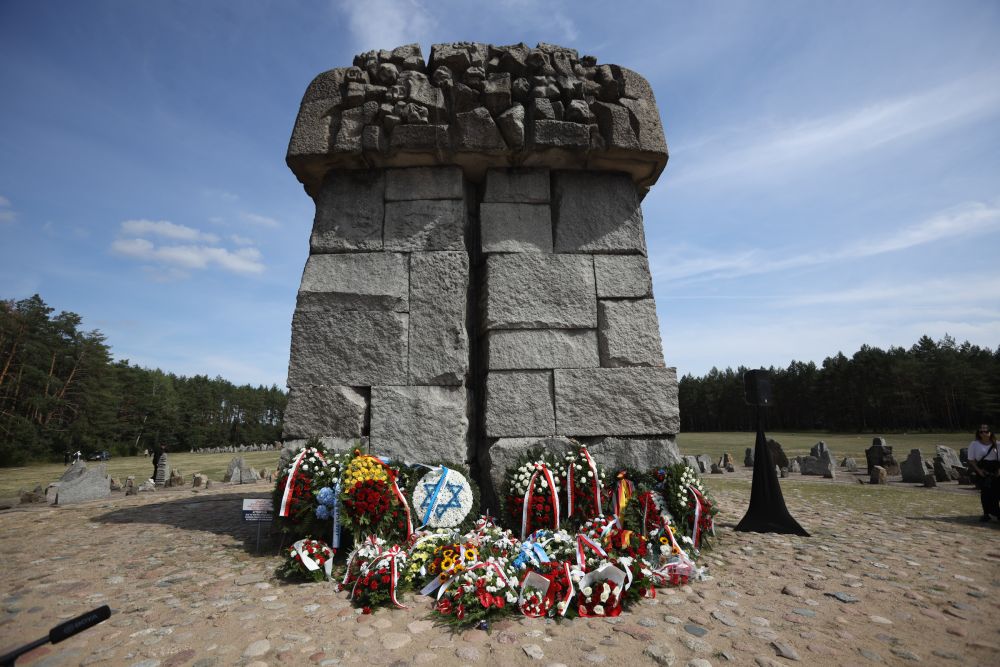- News
- Events
- Oneg Shabbat
- Collections
- Research
- Exhibitions
- Education
- Publishing Department
- Genealogy
- About the Institute
- Bookstore


fot. Grzegorz Kwolek, the JHI
Before the official celebrations began, the deputy director of the Jewish Historical Institute, Zuzanna Schnepf-Kołacz, together with the director of the Treblinka Museum, Edward Kopówka, laid wreaths at the Monument to the Victims of the Treblinka I Labour Camp and the monument commemorating the Roma and Sinti murdered in Treblinka at the execution site near the Treblinka I forced labour camp.
“We are gathering here not only to commemorate this uprising but also to testify to our memory of all the victims of the Holocaust. About over 800,000 murdered men, women and children. It is important to consolidate knowledge of what the Nazi extermination camp was. First of all, it is a material testimony of what the Holocaust was, i.e. a planned, systematic attempt to murder European Jews carried out with ruthless cruelty. This place tells us about their suffering, feeling of loneliness and emptiness. About the loss of hope,” said Dr. Michał Trębacz, the director of the JHI at the beginning of the official ceremony.
The ceremony was attended by representatives of the highest state authorities, local government authorities, cultural and Jewish institutions, as well as the diplomatic corps and a special guest – Ada Willenberg, widow of the camp survivor Samuel Willenberg, who miraculously survived the Holocaust thanks to the help of Polish families.
“I haven’t been to Treblinka, but for me, Treblinka is a cemetery. My mother is here, many members of my family are here, my husband’s two sisters are here, and here are the memories of my husband who has been remembering this place all his life,” said Ada Willenberg during her speech.
“For me, a representative of the German government and for Germans, it is very important that I can be here with you and honour the memory of the murdered. It is important to remember German crimes and their victims, but also to remember the courage of those people in the Treblinka extermination camp who rose against the German occupiers and murderers. I would like to pay tribute to all the victims and insurgents. The responsibility for the crimes of the German Nazis will not fade. Never again,” said Dr. Lorenz Barth, the Head of the Cultural Affairs Department of the Federal Republic of German Embassy, in his speech.
After the speeches, an interreligious prayer was held, led by the Chief Rabbi of Poland, Michael Schudrich, and the parish priest of the Holy Trinity Parish in Prostyń, Father Józef Poskrobka.
Then, the Kameleon Choir of Mokotów District under the baton of Katarzyna Boniecka performed the song “Lid fun toyt-lager Treblinka” (The Song of the Treblinka Death Camp) composed by one of the prisoners of the camp, probably the Austrian composer Konrad Mann. The song expresses objection and helplessness towards the endless march of hundreds of thousands of people towards death in the Treblinka gas chambers.
Then the wreath laying took place.
Thank you for your presence at this important but very painful event and for the fact that once again we could pay tribute together to the victims of the Treblinka II extermination camp.